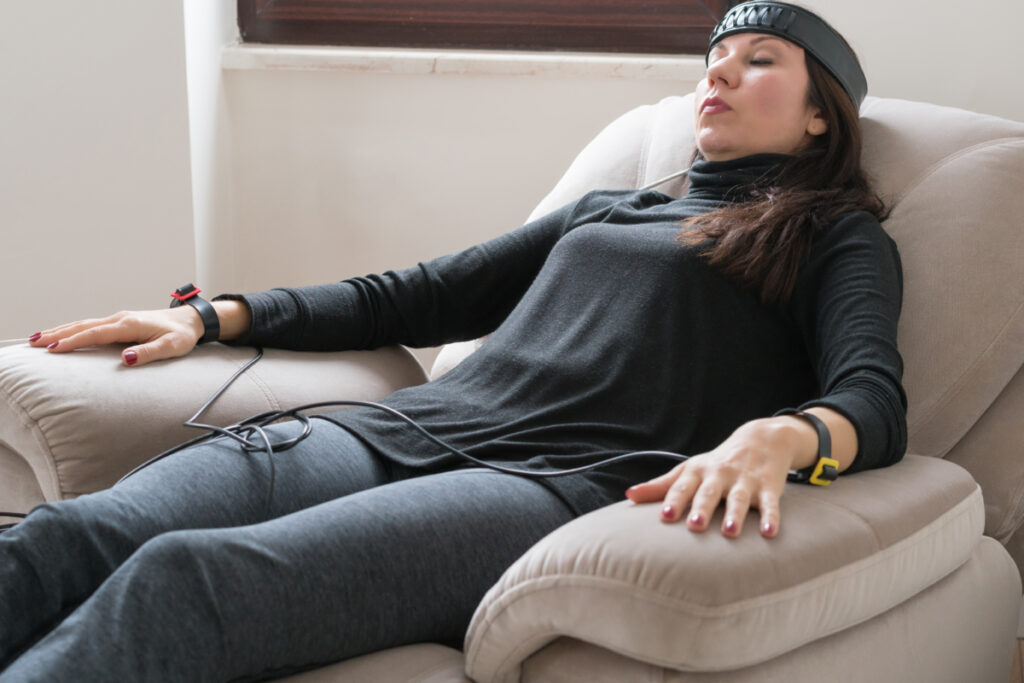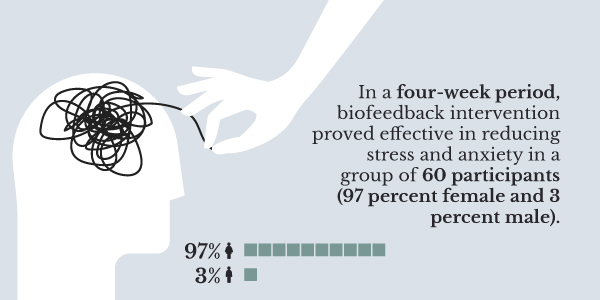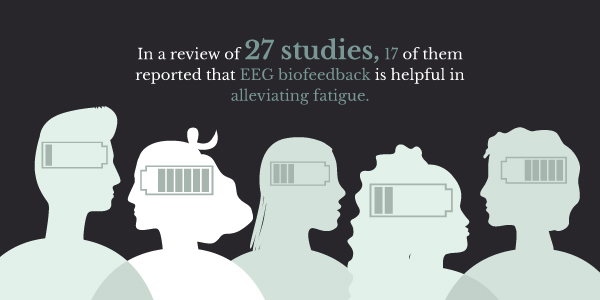Biofeedback Guide
What Is Biofeedback?
Individuals use biofeedback to learn how to control and cope with some psychological effects of stress. In a four-week period, biofeedback intervention proved effective in reducing stress and anxiety in a group of sixty participants (97 percent female and 3 percent male). Biofeedback involves using sensors attached to the body to help detect muscle tone and physiological function. It also involves using auditory or visual feedback to enable individuals to recognize the physical symptoms of stress. 1

Contact Profound Treatment to Learn More
Our team is standing by to discuss treatment options with you. Your call is completely confidential and no obligation is required.
Why is Biofeedback Therapy Beneficial in Treatment?
What Is Biofeedback Therapy?
The biofeedback therapists will describe the situation and guide the individual through the relaxation technique. It is a therapy that leans towards enabling individuals to control their bodily processes without using medication. These bodily processes, such as heart rate, blood pressure, and muscle tension, are often involuntary.
Types of Biofeedback

Respiratory Biofeedback
Heart Rate Variability Biofeedback
The electrocardiograph helps to measure the heart rate and its variability. It is a form of therapy that involves feedback on the heart rate data beat by beat. The feedback ensures the breathing matches the patterns of the heart rate on the breathing feedback equipment. It is useful for treating several disorders such as depression and asthma.
Galvanic Skin Response
Blood Pressure Biofeedback
Thermal Biofeedback (Temperature Feedback)
Neurofeedback (EEG Biofeedback)
Electromyography
What Can Biofeedback Treat?
- Anxiety, depression, and post-traumatic stress disorder
- Attention-deficit disorders
- Breathing problems, such as asthma
- Digestive issues, such as irritable bowel syndrome and constipation
- Insomnia
- Headaches, fibromyalgia, and joint and muscle pain
- Diabetes
- Epilepsy
- Seizures
- High blood pressure
- Substance use disorders, such as alcoholism and drug addiction
Biofeedback for Anxiety
Benefits of Biofeedback
It’s Non-Invasive
It Can Complement Other Treatments
Another significant benefit of biofeedback is that it complements other treatments well. Individuals can use biofeedback as a part of a well-rounded treatment approach. Most individuals often use biofeedback to enhance relaxation strategies, medications, and other treatments. This non-invasive treatment enables individuals to maintain their well-being and self-awareness.
It Can Help Put You in Control of Your Emotions
Biofeedback Techniques

Deep Breathing
Benefits of Deep Breathing
Progressive Muscle Relaxation
Benefits of Progressive Muscle Relaxation
Guided Imagery
Mindfulness Meditation
How Biofeedback Works: an Overview
Things to Consider Before Starting Biofeedback
Cost
Biofeedback Devices
Biofeedback devices are available for use by both mental health and medical professionals. Some of these devices are also available for personal use, and individuals can purchase them in the consumer market. However, it is important to reach out to your therapist about the devices they recommend.
Categories of Biofeedback Devices
- Clinical Biofeedback Devices: It is an FDA-regulated biofeedback diagnostic machine often available at the biofeedback therapist’s office and is often utilized for medical purposes
- Personal Use Biofeedback Devices: These devices often require the individual to wear sensors that record their information. Individuals can also plug the device into a computer. These devices also include some wearable instruments, like brainwave monitors.
What to Expect During a Biofeedback Therapy Session

An Overview of Biofeedback
How Many Sessions Will I Need?
How Often Should I Get Treatments?
- Condition you are trying to manage
- The severity of your symptoms
- Response of your body
- The amount you practice between sessions
Does Insurance Cover Biofeedback?

Can You Do Biofeedback at Home?
Resources
- https://www.ncbi.nlm.nih.gov/pmc/articles/PMC4411437/
- https://pubmed.ncbi.nlm.nih.gov/28573597/
- https://www.winchesterhospital.org/health-library/article?id=13550
- https://www.ncbi.nlm.nih.gov/pmc/articles/PMC2939454/
- https://www.ons.org/cjon/23/5/guided-imagery-reducing-anxiety-depression-and-selected-side-effects-associated







